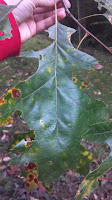liriodendron tulipifera (tulip popular)
\10-7-12
Gray woods (brooke gray's house)
Sunday, October 7, 2012
Wednesday, October 3, 2012
Sunday, September 23, 2012
Chart for License Plates
Places Two Plates One Plate Total
Meijers 98 cars 2 cars 100
Kroger 97 cars 3 cars 100
Wal-Mart 96 cars 4 cars 100
Meijers 98 cars 2 cars 100
Kroger 97 cars 3 cars 100
Wal-Mart 96 cars 4 cars 100
pie graph for license plate project
-WALMART= 96% of cars with 2 license plates
-KROGER=97% of cars with 2 license plates
-MEIJERS=98% of cars with 2 license plates
Steps to License Plate Project
Research
Alabama, Arizona, Arkansas, Delaware, Florida, Georgia, Indiana, New Mexico, Kansas, North Carolina, Kentucky, Oklahoma, Pennsylvania, South Carolina, Tennessee, West Virginia. All of these states only require one plate and the rest require two.
Hypothesis
My hypothesis about the license plate experiment is simple. I think there will be more two license plate cars than cars with one at the stores my group goes to. I think this because in Ohio drivers are required to have both front and back plates. On the other hand we might see a few one plate cars because some of the surrounding states only require one, like for example, Kentucky.
Prediction
My prediction follows my hypothesis very well. I predict that in the information we collect, there will be slim to no cars that have only one plate. So, therefor the percentage of two plate cars will be extremely high.
Experiment
(before)
My group is going to Meijers, Kroger, and Wal-Mart to collect data. While we are there we will look at 100 cars in each parking lot, write down the state the plates are and how many plates it has.
Experiment continued
(After)
After preforming the experiment we found our hypothesis and prediction were true. Oddly enough there were out of state cars at every store, that only had one plate. However as we said, the percentages of two plates on a car were very high because of the Ohio cars.
Conclusion
We conclude that this information would be greatly altered if you were in another state, that perhaps only required one plate. Also another detail in this experiment is the location of the stores. If the stores were located in an area that is by or on state borders, then it could be close to three or four states at once, this means some of the counties would be closest to that store so there may be three or four main states in the lot that have one or two or a mixture of both plates required.
Alabama, Arizona, Arkansas, Delaware, Florida, Georgia, Indiana, New Mexico, Kansas, North Carolina, Kentucky, Oklahoma, Pennsylvania, South Carolina, Tennessee, West Virginia. All of these states only require one plate and the rest require two.
Hypothesis
My hypothesis about the license plate experiment is simple. I think there will be more two license plate cars than cars with one at the stores my group goes to. I think this because in Ohio drivers are required to have both front and back plates. On the other hand we might see a few one plate cars because some of the surrounding states only require one, like for example, Kentucky.
Prediction
My prediction follows my hypothesis very well. I predict that in the information we collect, there will be slim to no cars that have only one plate. So, therefor the percentage of two plate cars will be extremely high.
Experiment
(before)
My group is going to Meijers, Kroger, and Wal-Mart to collect data. While we are there we will look at 100 cars in each parking lot, write down the state the plates are and how many plates it has.
Experiment continued
(After)
After preforming the experiment we found our hypothesis and prediction were true. Oddly enough there were out of state cars at every store, that only had one plate. However as we said, the percentages of two plates on a car were very high because of the Ohio cars.
Conclusion
We conclude that this information would be greatly altered if you were in another state, that perhaps only required one plate. Also another detail in this experiment is the location of the stores. If the stores were located in an area that is by or on state borders, then it could be close to three or four states at once, this means some of the counties would be closest to that store so there may be three or four main states in the lot that have one or two or a mixture of both plates required.
Subscribe to:
Comments (Atom)
































